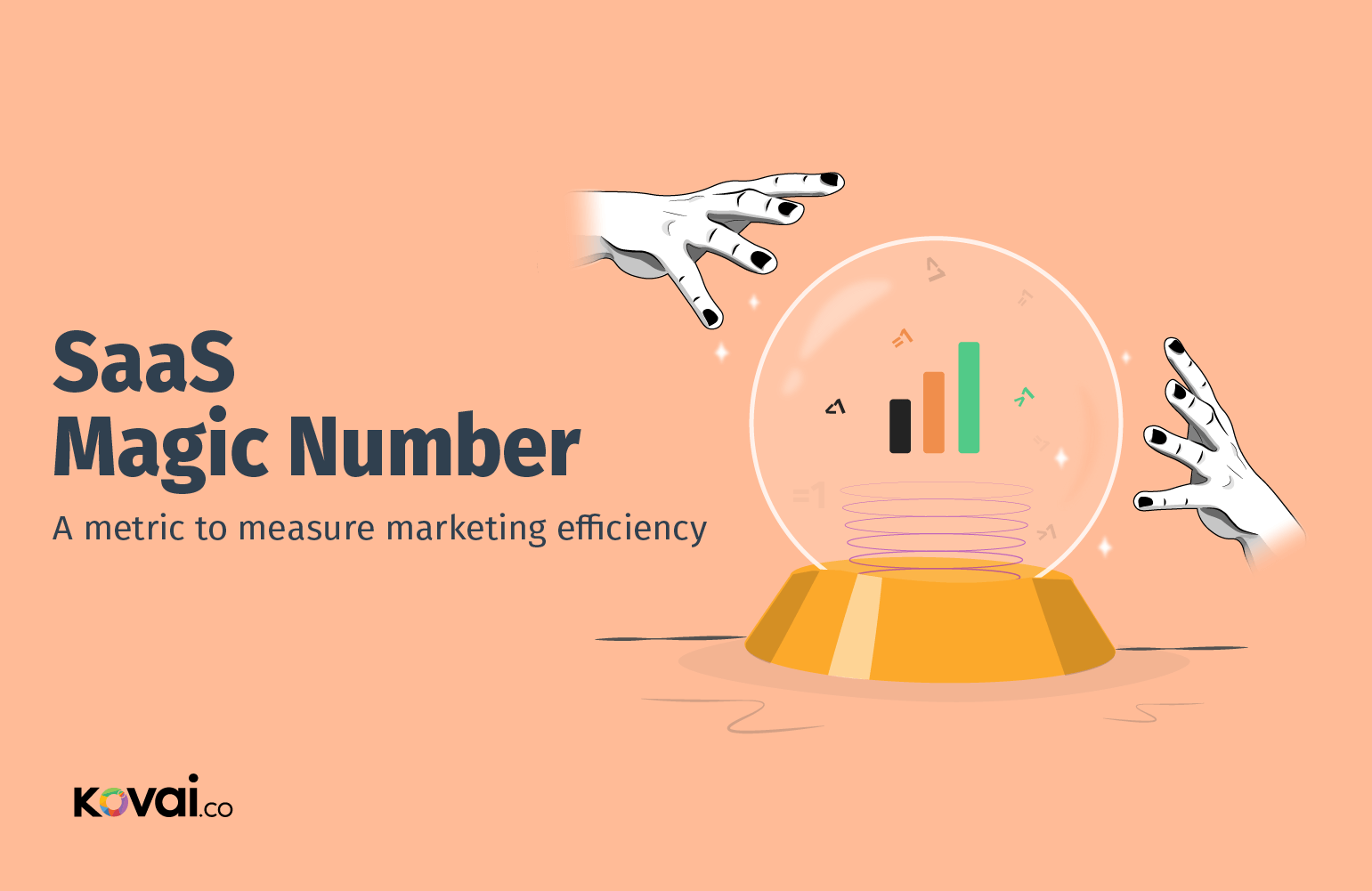The SaaS industry is fundamentally changing the way software vendors earn their revenue. Compared to days of companies selling software with expensive license fees and upfront implementation costs, SaaS companies are making big tech affordable to all players. They offer a recurring revenue-generating subscription model, where customers pay only for resources they need and only when they need them.
Thus SaaS companies often realize large revenues only when they reach a certain volume and are extremely competitive. Thus, it is critical in SaaS, to understand how a company’s sales and marketing spend is affecting its annual recurring revenue (ARR) growth.
The SaaS magic number is one such sales and marketing efficiency measuring metric
What is the SaaS magic number?
The SaaS magic number is a way to evaluate whether you should continue to invest in customer acquisition or take your foot off the gas. Popularized in the mid-2000s, it’s a way to help companies decide “how much gas to pour on the fire of your startup”.
How do you calculate the SaaS magic number
The formula is simple.
(Current Quarter Revenue-Previous Quarter revenue) x 4
Previous quarter’s sales and marketing Spend
Let’s say you have increased your revenue by $25,000 this quarter, compared to the last, it’s assumed that your ARR will be $100,000 provided that your churn is minimal. So, if your previous quarter’s marketing spend was also $100,000, it means that you will earn back your sales and marketing spend within a year.
What is a healthy SaaS magic number?
The industry average is that a SaaS magic number of 0.75 and greater is a sign that you should continue investing in customer acquisition. A SaaS magic number of lesser than 0.75 means that you should re-evaluate you’re spending. A magic number of 1.0 or greater is ideal.
Less than 1
Between 0.75 and 1 is a relatively green zone and implies that you continue investing in marketing and sales efforts. However, if your number is less than 0.75, it shows that there might be something noticeably wrong in your process. Either your churn rates are abnormally high, or your customer acquisition costs might not work out in your current pricing model. The goal here is to improve and get closer to a magic number of 1 or greater.
Equal to 1
A figure of 1.0, means your current marketing strategy and process works and it’s time to step on the gas. As Lars Leckie, who coined the concept of the SaaS magic number, puts it is time to increase marketing expenditure because the business is primed to leverage spending into growth.
Greater than 1
If your magic number is greater than 1 you are building a well-run machine. Revenue growth should be easy and you should be investing more in testing new channels and customer acquisition models.
Why is the Magic Number important?
The SaaS magic number formula is crucial to calculate and predicting profitability. It’s a number that tells you how much company revenue is generated for every dollar spent on acquiring new customers with sales and marketing.
The magic number allows you to make informed decisions on your company’s growth, business model, sales and marketing expenditure.
How to Improve your SaaS Magic Number?
It is quite simple to improve your SaaS Magic number. You need to earn more revenue or optimize your sales and marketing spend, ideally, both.
A few changes that can be made include:
- Selling to existing customers
- Shorten your sales cycle.
- Eliminate underperforming paid channels
- Invest in low-cost, high-yielding marketing options
- Work with a SaaS Marketing specialist
Other Metrics You need to look at along with the SaaS Magic Number
Your SaaS magic number may be great, but it often doesn’t tell the whole story—the following metrics also need to be looked at when evaluating your sales and marketing spend.
Churn Rate
Your sales and marketing expenses may help you generate an increased ARR, but it won’t matter if your churn rates are high. It doesn’t make a difference how effective you are at acquiring new customers if you can’t retain them for long. Customer retention is key to a solid SaaS magic number.
Gross Margins
Watch your COGS (Cost of goods sold). If your COGS is high, then the payback period for sales and marketing expenditure will also be longer. Just because your SaaS magic number is greater than 1, doesn’t mean you should ramp up spending on customer acquisition until you know how long it will truly take for you to earn back the cost of the new customers.
Cash Flow
It is important to keep track of the cash that is available for spending. It is important to be careful not to break the bank just because customer acquisition is efficient. Downturns and unexpected events happen—so it’s important to have a model of cash flow and keep it in check. Nobody can service new or existing customers if cash runs out.
Conclusion
The SaaS Magic number may have flaws and shortcomings, but for a SaaS startup business, the magic number presents a clear picture of financial health and viability. It’s a great number to present when attracting investments because it helps draw elaborate data-driven reports about the business’s position in the market and marketing expenses. But looking at a couple of other SaaS metrics like the Bessemer CAC Ratio or CAC Payback period is also crucial before taking decisions.

